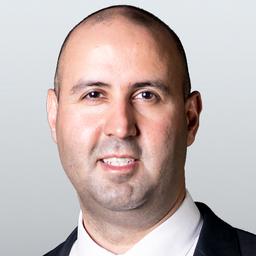Doug Ford’s Progressive Conservatives sailed to a third majority government in Ontario after the province’s Feb. 27 election.
Unofficial results on election night showed the PCs winning 80 seats in the province’s 124-seat legislature.
The NDP maintained its status as the Official Opposition with 27 seats, while the once-governing Liberals remained as the third party, but now with official party status with 14 seats. The Greens held on to their 2 seats, and Independent Bobbi Ann Brady held her Haldimand-Norfolk seat.
All party leaders represented in the legislature except Liberal Leader Bonnie Crombie won in their own ridings.
In his victory speech in Toronto, Ford said his party has made history.
“Together, we have secured a strong historic third majority mandate,” Ford said. “We asked the people for a mandate to make Ontario the most competitive place in the G7 to invest, create jobs, and do business. The people said yes.”
Ford, who had focused his campaign on responding to U.S. President Donald Trump’s tariffs, said he will “work with everyone to get things done now as we stare down the threat of Donald Trump’s tariffs.”

NDP Leader Marit Stiles said voters have trusted her party as the Official Opposition, and that her job now is to “hold this government to account.”
“That is the job that we are going to do with our usual fight and our determination, but also with love and hope and optimism,” she said, adding that she will help Ford with the response to the U.S. tariffs.
Liberal Leader Crombie, who lost as a candidate in the riding of Mississauga East-Cooksville to the PC candidate, celebrated her party regaining official party status, and emphasized several times that she will stay on as leader.
“Many, many of you are asking for a strong voice to hold [Ford] accountable as premier, and you can count on me,” said Crombie, who was formerly the mayor of Mississauga. “I’m going to continue to fight for our public healthcare system every single day.”
This is the second provincial election in Canada in the past 12 months in which the incumbent expanded its majority. Like Ford, Nova Scotia Premier Tim Houston also increased his majority government. His landslide win last November bucked the trend seen in other provinces where the governing party either lost power or garnered fewer seats.

New Brunswick’s governing Progressive Conservatives were defeated by the Liberals, the B.C. NDP retained a slim majority in a tightly contested contest against the Conservatives, and the Saskatchewan Party maintained a majority government, but lost seats to the NDP.
Snap Election
Ontario’s election call came more than a year before the fixed election date in June 2026. Ford, whose party had been steadily ahead in the polls, said he needed a stronger mandate to respond to Trump tariffs.Ford said throughout his election campaign that he wanted a strong four-year mandate that would not only help him in navigating negotiations with the United States, but would outlast the Trump administration. He was criticized by the opposition parties for calling the early election, saying it was a waste of provincial funds and that Ford was trying to capitalize on strong polling numbers.

Other Party Platforms
NDP’s Stiles focused heavily on health care, promising the NDP would spend $4 billion on several health-care initiatives, including finding a family doctor or nurse practitioner for every Ontario resident. The party also said it would implement a Buy Ontario campaign and defend the auto sector in the face of potential U.S. tariffs.The party pledged to focus on finding housing to end encampment living and would construct more affordable housing units.
She also vowed to double the Ontario Disability Support Program and index it to inflation, tackle interprovincial trade barriers, and scrap the provincial land transfer tax for first-time homebuyers and seniors looking to downsize.








